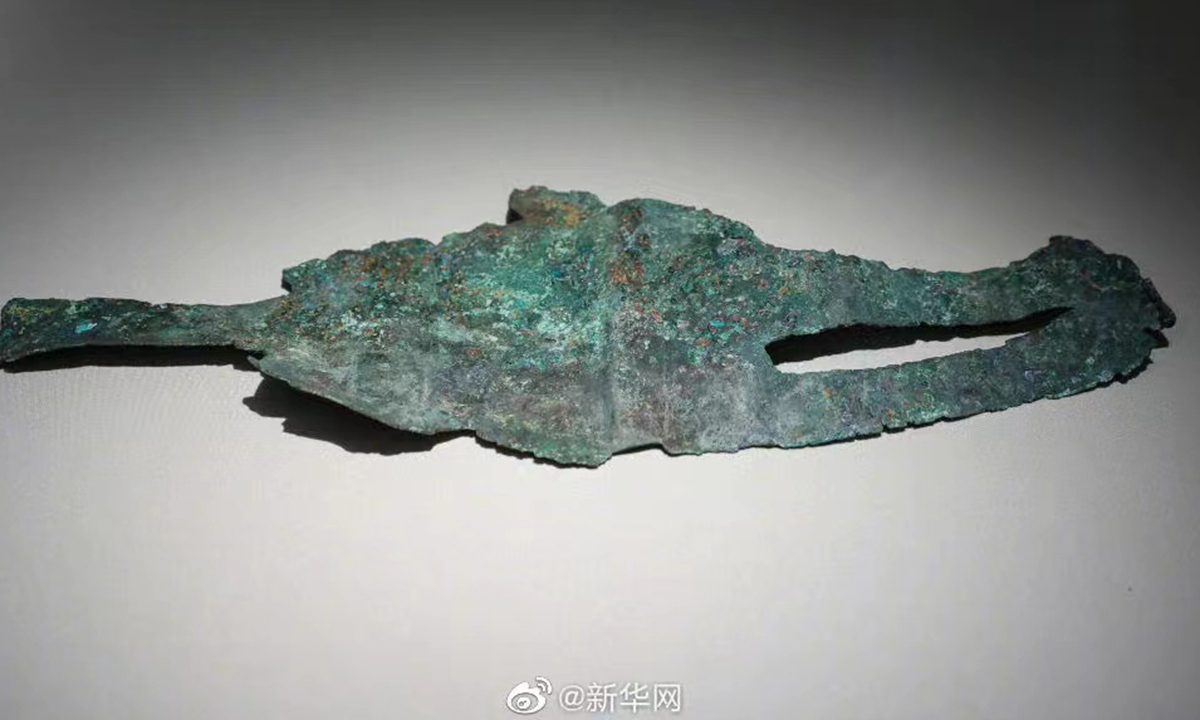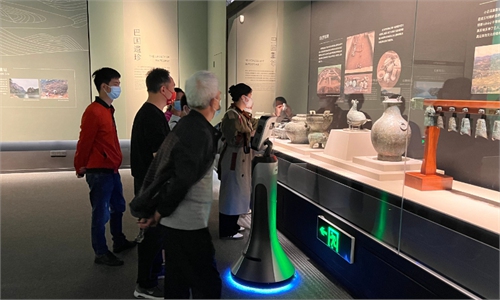ARTS / ART
Early tricycle model in China found at Laolongtou Tomb site in Sichuan Province

Bronze relic discovered at Laolongtou Tomb site Photo:Sina Weibo Xinhua
Some new discoveries were made at the Laolongtou Tomb site in Yanyuan county, Sichuan Province, in mid-June. More than 1,100 tombs dating from the late Shang Dynasty (c.1600BC-1046BC) to the early Western Han Dynasty (206BC-AD8) have been excavated. Unearthing more than 5,000 relics, the site is reveals how bronze culture thrived in Southwest China during ancient times.Ever since the fourth excavation of the site began in April 2020, various relics including 1,700 bronzes, 2,000 pottery and 200 jade and gold wares have entered the site's collection.
One highlighted from among the numerous discoveries is a three-wheeled bronze carriage, which is the earliest tricycle model ever found in China.
Additionally, the earliest bronze utensil in Southwest China and another bronze shaped like a tree branch were discovered. The latter has an imaginative and intricate design featuring a human figure standing on the top of the tree and holding a sword-shaped object.
At the first academic forum focusing on Yanyuan Bronze culture launched on Saturday in Yanyuan county, Tian Jianbo, head of the Laolongtou Tomb site's archaeological excavation, noted to media that the past three years of effort shows the central Sichuan-Yunnan region had already formed during the Bronze Age.
The expert also broke down the three stages of Yanyuan Bronze culture. The first stage was during the Shang Dynasty to Western Zhou Dynasty(1046BC-771BC). During this time the main sacrificial wares were pottery wares.
The second stage came during the Spring and Autumn Period (770BC-467BC) and the discovered funeral objects from this period have been mainly bronze and stone wares.
The third stage from the Warring States Period (475BC-221BC) to the early Western Han Dynasty (206BC-AD8) shows a distinct class differentiation in this period's tombs.



